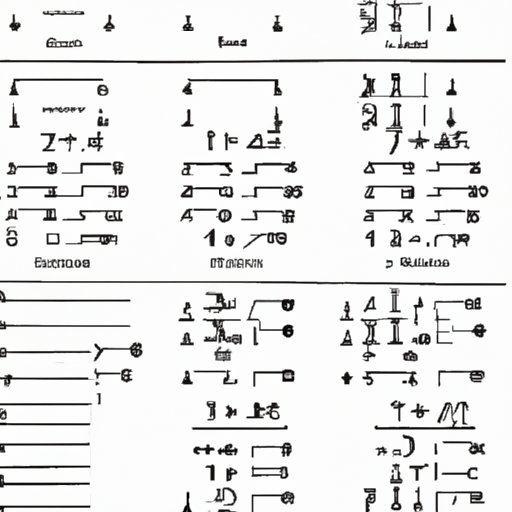
I. Introduction
Understanding how to turn a fraction into a decimal is a fundamental skill in mathematics. It is essential for many real-world applications, including accounting, finances, and science. In this article, we will cover the concept behind fractions and decimals, provide a step-by-step guide to convert fractions into decimals, use examples to illustrate the process, demonstrate with visual aids, compare the process to other methodologies, and highlight common mistakes.
II. Explain the Concept
A fraction is a number that represents parts of a whole. It consists of a numerator (the top number) and a denominator (the bottom number), separated by a horizontal line. A decimal is a number expressed in tenths, hundredths, thousandths, and so on. Decimals have a decimal point that separates the whole number from the fractions of a whole that follow.
There is a relationship between fractions and decimals, and it’s important to be able to convert fractions into decimals. Understanding decimals is crucial in the real world because it simplifies calculations and improves accuracy. Decimal numbers are easier to add, subtract, multiply, and divide than fractions. Businesses and finance professionals rely heavily on decimals, making it essential to be able to convert fractions to decimals accurately and efficiently.
III. Provide a Step-by-Step Guide
The steps to convert a fraction into a decimal are as follows:
- Divide the numerator by the denominator.
- Express the result as a decimal.
Here’s an example:
If we want to convert the fraction 3/4 to a decimal, we divide 3 by 4, which gives us 0.75.
IV. Use Examples
Let’s take a look at some more examples:
- Convert 1/2 to a decimal – 1 ÷ 2 = 0.5
- Convert 2/5 to a decimal – 2 ÷ 5 = 0.4
- Convert 5/8 to a decimal – 5 ÷ 8 = 0.625
Real-world examples of converting fractions to decimals include calculating sales tax, figuring out percentages of sales, and measuring ingredients when cooking or baking.
V. Demonstrate with Visual Aids
Diagrams, charts, and graphs can help understand the relationship between fractions and decimals. Here’s a simple example:

In this example, we can see that 1/2 is equivalent to 0.50 as a decimal.
VI. Compare the Process to Other Methodologies
Other methods for converting fractions to decimals include using long division or a calculator. However, using the step-by-step guide outlined in this article is often quicker and simpler for smaller fractions. For example, dividing 3 by 4 is easier and more straightforward than using long division or a calculator.
VII. Highlight Common Mistakes
One common mistake when converting fractions to decimals is miscalculating the division. Another is forgetting to place the decimal point in the correct position. To avoid these mistakes, double-check the calculation after dividing the numerator by the denominator and ensure that the decimal point is in the correct position.
Memorizing the steps of the process is not enough. It is crucial to understand the concept behind the calculation so that mistakes can be avoided.
VIII. Conclusion
Converting a fraction into a decimal is a vital skill in mathematics that has widespread applications in the real world. Understanding the concept behind fractions and decimals is essential for accurate and efficient calculations, and the step-by-step guide provided in this article can help you do just that. By using examples, visual aids, and highlighting common mistakes to avoid, you can master this skill and apply it to real-world scenarios with ease.




